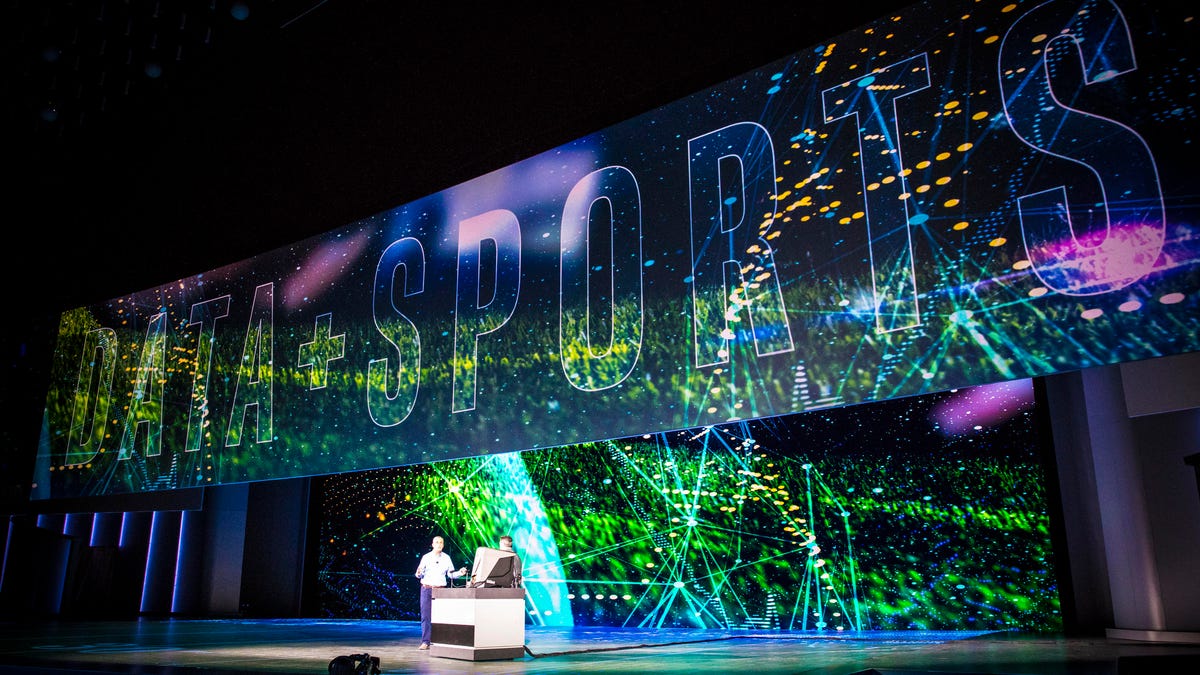Intel wants to immerse you inside your TV
Using huge arrays of cameras, the chipmaker is able to splice together NFL plays or movie scenes like never before.

At Intel's 2018 CES presentation, where the company showed how it uses huge reams of data to create new forms of entertainment.
The entertainment industry has taken plenty of stabs at trying to put you directly in the action of a show, using tech like virtual reality , 3D and high-resolution displays.
Intel CEO Brian Krzanich on Monday sought to take those ideas a step further during a keynote speech at the CES tech show in Las Vegas. He presented a handful of immersive media concepts using arrays of Intel-powered cameras to capture much more of a scene or sports field.
"It's going to transform the consumer experience in almost every area: Retail, travel, advertising, entertainment, education, even medicine," he said of immersive media. "The real opportunity is to use data to produce and deliver the most immersive, realistic content possible."
While these concepts will likely require enormous amounts of computational power and likely result in higher production costs, they have the potential for changing how we experience movies and sports, and could provide filmmakers with new ways for telling stories.
Krzanich showed a packed crowd at the Monte Carlo resort's Park Theater how Intel uses dozens of high-definition cameras stationed all around a football field to capture just about every angle of a play, allowing broadcasters to provide recaps from the point of view of anyone on the field.
Using this technology, viewers will be able to watch a game in VR from any vantage point they'd like, with fantasy stats overlaid on their displays. These 360-degree views are created using so-called volumetric data, populated by voxels, which are pixels in a 3D space.
"The specialness comes from being the player," Tony Romo, the former Dallas Cowboys quarterback and CBS announcer, said onstage about the technology, called True View. CBS also owns CNET.
Intel plans to bring this technology next the Winter Olympics, allowing people to see 30 live and on-demand events in VR.
Krzanich also showed the audience a video from the new Intel Studios in Las Angeles, in which a Western was shot using an array of 100 cameras to capture every angle imaginable for a scene. Those angles were then spliced together to create an action sequence that included quick, sweeping camera movements, reminiscent of the "Matrix" movies. But if a director decided he wanted to show a different perspective -- even if it was from a horse -- he'd be able to using the video already captured from one take.
Despite the hopeful tone of Krzanich's immersive media presentation, he started his speech by addressing two massive security flaws, called Meltdown and Spectre, that were revealed last week and affected computers using Intel, ARM and AMD chips.
"Our primary goal has been to keep our customers safe," he said. "We have not received any information that these exploits have been used to obtain customer data."
What to expect from the smart home at CES 2018: We take a look at the smart home and appliance trends we expect to see this year.
CES 2018: CNET's complete coverage of tech's biggest show.

